A few tentative clicks quickly broke into a continuous high pitched whirring sound. Before I could realise, the entire forest was abuzz with this sound. It was so loud that it almost drowned the voice of my friend who was trying to tell me something, standing right next to me. My involuntary reaction was to immediately close my ears!
In a little while the sound died down, as abruptly as it had started. The whole process repeated all over again. It seemed like an invisible conductor was directing a musical performance of an equally invisible ensemble. This is probably very familiar for many of us who visit the jungles. The originators of this music are the cicadas.
Cicadas belong to the elite club of insects that have the dubious distinction of being the loudest insects in the world. Even more interesting – only the male cicada produces these sounds while the females are ‘mute’ spectators! To produce such loud sounds, they use a very simple mechanism. A pair of membranes at the base of the abdomen vibrate to produce the sound. The abdomen of the male cicadas is empty – an air column that resonates. It thus behaves essentially as an amplifier!
Not only do the cicadas produce such loud noises, they also do so in synchrony – several males sing together. How the males start and stop singing together is still a mystery, leaving us wondering about the capabilities of these little insects in awe.
Most of us may have heard these sounds even though we might not have had a chance to sight the creatures. This is because many of them are well camouflaged when they are sitting on tree trunks.
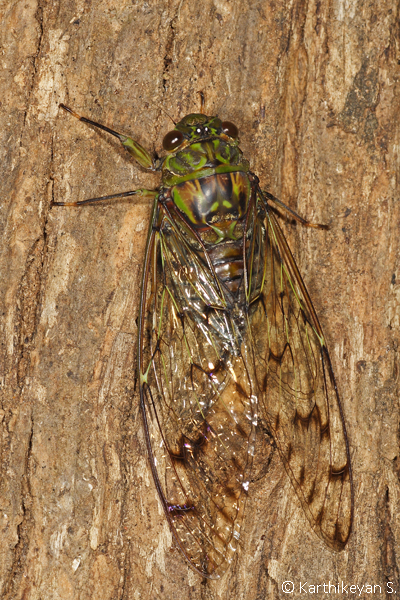
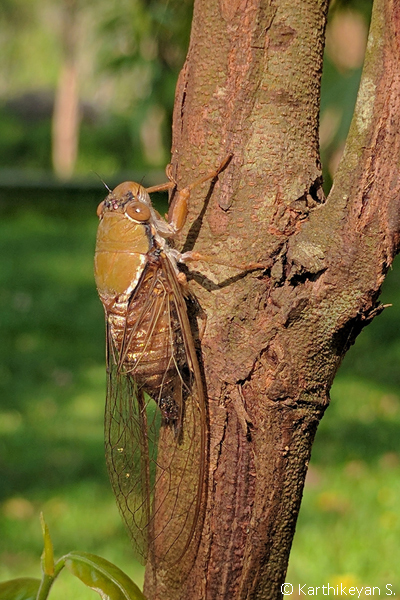
Nevertheless, spotting a cicada is definitely possible with some practice. Being essentially plant bugs, they feed on plant sap. Therefore, it is best to look for them on plants – typically on the trunk and the branches of trees. At times, when approached, they take off with a whirring sound only to land on another tree nearby.
Cicadas undergo an incomplete metamorphosis. They are also known to have prolonged larval (nymphal) stages. The nymphs emerge from the eggs laid in slits on tree trunks by the female cicadas. They find their way down to the soil and burrow underground where they feed on sap from tree roots. They have a mouth that is particularly well adapted for feeding on plant sap.
Once the nymph is ready to emerge it crawls out of its subterranean abode and on to tree trunks, rocks and such similar substrate in the vicinity. Eventually, the nymphal skin breaks open in the thoracic region and the adult with wings and all emerges as can be seen in the pictures below.
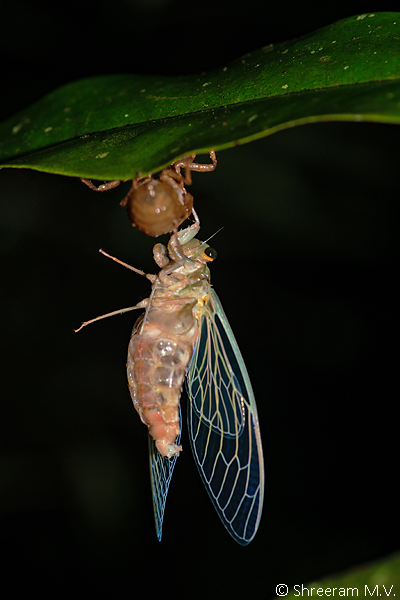
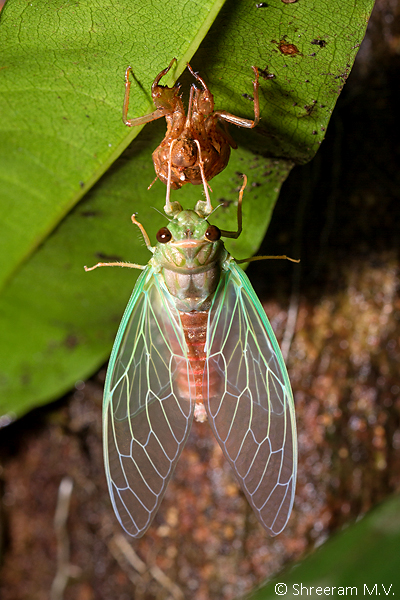
And, leaves behind an empty exoskeleton.
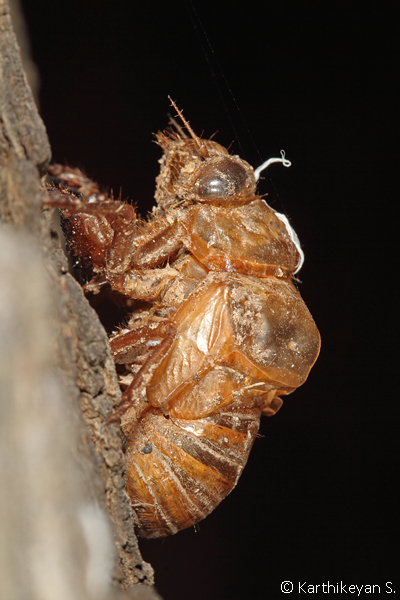
It will go on and do what is expected of an adult insect – reproduce. And if the emerging cicada happens to be a male, it also is expected to make a lot of noise to ensure that the females of its ilk are impressed and recognise the males!
World over, there are about 1300 species of cicadas. In India alone some 250 species have been recorded with some being very colourful and attractive.
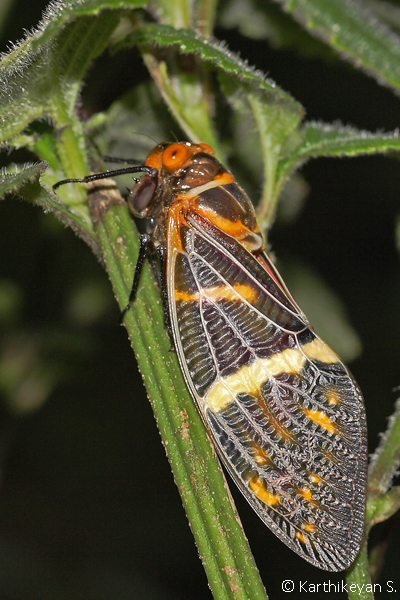
Gaeana atkinsoni from B.R.Hills, Karnataka
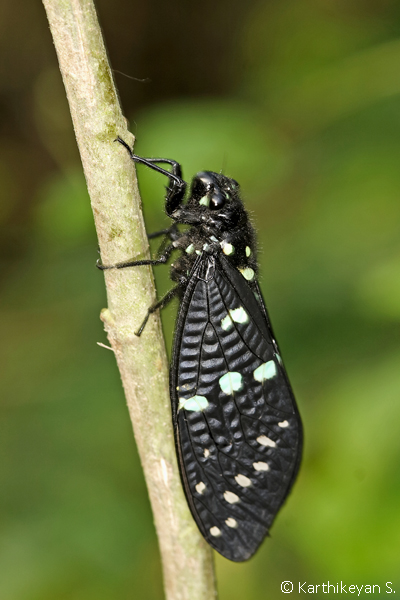
Gaeana maculata from Assam
While in the woods, we are most often in the quest for charismatic organisms. When we do see one, it is a visual treat. The next time you happen to be in the forest, stop, listen and be prepared for an auditory treat; enjoy the orchestra of the cicadas. This can enhance your experience of the wilderness many times over and make you wonder about these marvels (or should I say secrets?) of Nature.